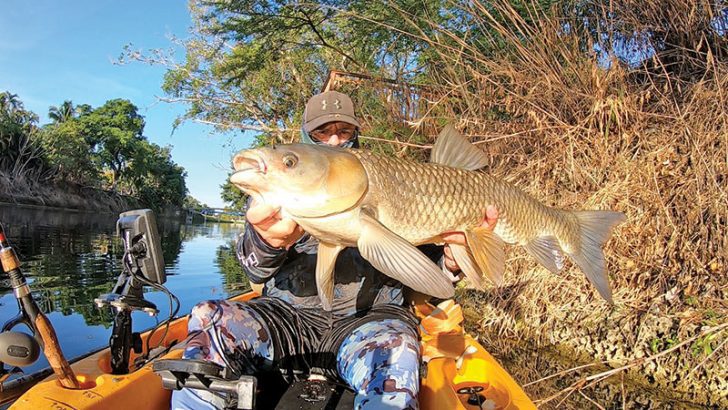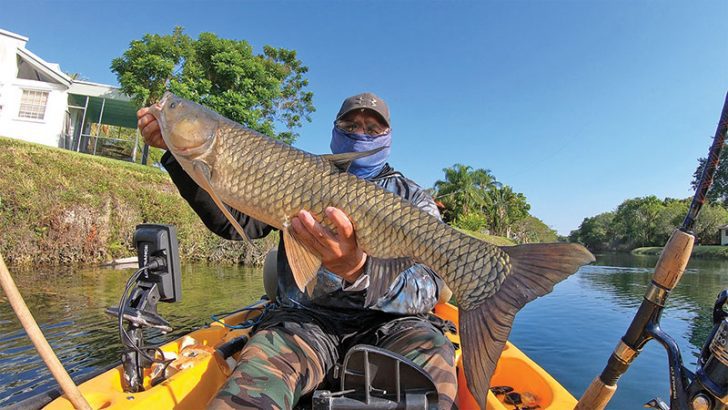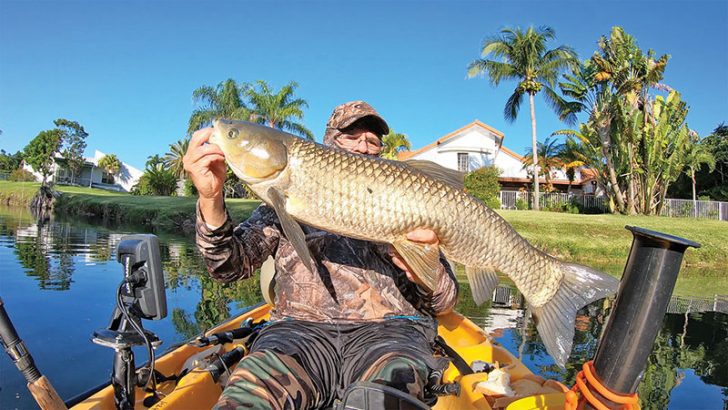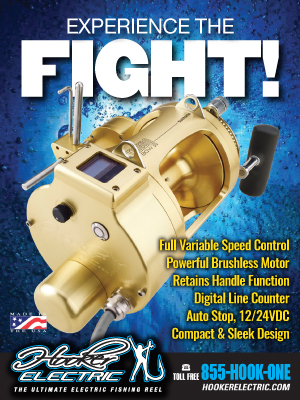I remember the first time I was actually fortunate enough to witness an early morning grass carp feeding frenzy. Yes, they get pretty fired up!.
I had the day off work and the weather was picture perfect! The winds were light and the sky was clear. So fishing it was. I quickly grabbed my kayak and fishing gear, loaded my vehicle and off I went. The original plan was to target peacock bass here in South Florida, but that plan changed rather quickly though.
Almost as soon as I launched my kayak and began paddling away, I noticed within a few hundred yards away from me, some extremely large surface tailing fish. At first I thought they were some sort of catfish, which live throughout our freshwater canal systems. However, I was very wrong. As I paddled closer to them, I could see that they were the largest of all the grass carp I had ever seen. Since they were feeding so aggressively and competed for the berries that were dropping from the overhead tree branches, they paid little or no attention to me as I closed in on them.

On this day I had brought a sandwich with me, so bread wouldn’t be a problem. I let my kayak slowly drift away from these fish, as I quickly prepared a mixture of some bread and floating berries. Without causing too much surface commotion, I began chumming the immediate area with small clusters of the mixture. Nothing, no takers. What happened? I realized that the clusters were too heavy and were sinking rather quickly. So I just tossed bread pieces on the surface instead. They started feeding immediately! Now was the time to try my luck at catching one of these behemoth creatures. I grabbed a rather large piece of bread and balled it up on the hook. I cast right into the middle of the grass carp school and it was fish on! My first grass carp was 28pounds and I was completely stoked!
Since you’ll probably be using light fishing line, for lower visibility like myself, it’s important to note that you must keep the drag set lighter than usually used for fishing. To set the hook, palm the reel firmly, without having too much drag resistance set. At first the grass carp won’t know what is going on and will feel like just heavy dead weight to the angler, but when the fish rewwalizes he’s hooked, watch out folks! A powerful tug of war battle will most likely begin, with the fish diving deep and making hard runs, like few other freshwater species do. This is where the lighter drag setting comes to play. I have lost a few battles, by having my line snap, due to tight drag failure, but the lighter line seems to be better in enticing this worthy opponent into biting.

Please Note: In Florida, grass carp fishing is strictly catch and release only. A quick picture and back in the water it must go. It is considered illegal to remove and transport grass carp away from their habitat. These fish have been stocked for weed control, in local ponds and canal systems by property owners and other cooperating organizations. All grass carp that are stocked in Florida, must be sterile, or “Triploid” as it is referred to. For other rules and regulations, be sure to visit FWC’s website directly.
~ Frank Guard


